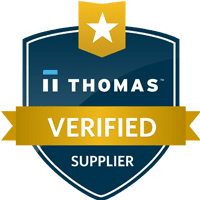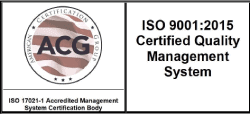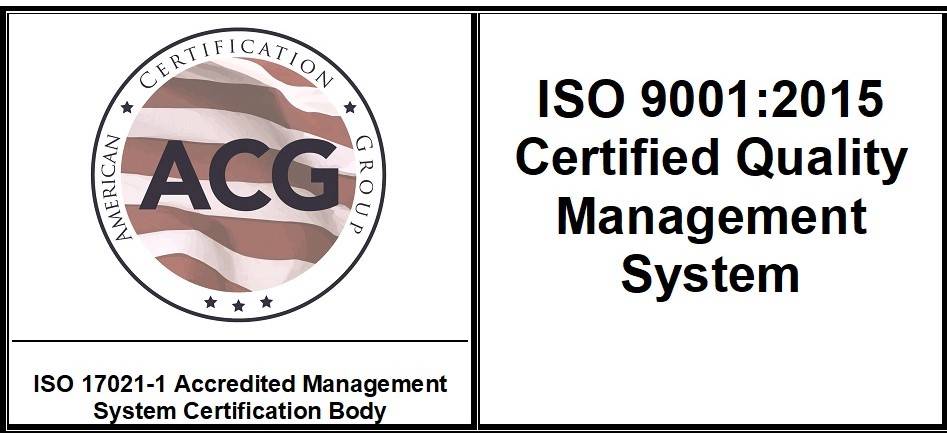In the modern manufacturing industry, sustainability has become a central focus. As concerns about environmental impact grow, advanced molding techniques such as urethane casting and injection molding are proving to be pivotal in driving sustainable plastic production. These techniques not only enhance efficiency but also facilitate the use of recyclable materials, significantly contributing to more eco-friendly manufacturing practices. Discover how these advancements are setting new standards in eco-friendly manufacturing and paving the way for a greener future.
Sustainable plastic production is crucial for reducing the environmental footprint associated with plastic manufacturing. It includes practices aimed at minimizing waste, lowering energy consumption, and reducing dependence on non-renewable resources. Advanced molding techniques are instrumental in this pursuit by improving the efficiency of production processes and supporting the use of environmentally friendly materials. This results in a more sustainable approach to plastic manufacturing, aligning with global efforts to mitigate environmental impact.
Urethane casting is a highly versatile technique where liquid urethane is poured into molds to create durable plastic parts. This method is especially valued for its precision and ability to produce complex geometries with minimal material waste. By utilizing urethane casting, manufacturers can enhance sustainable plastic production. The process allows for the integration of recyclable materials, reducing the reliance on virgin plastics and decreasing overall waste. Urethane casting’s efficiency also minimizes the need for multiple production runs, further contributing to a reduction in environmental impact.
Injection molding is another advanced technique where molten plastic is injected into a mold to form various products. Recent innovations in injection molding focus on sustainability by emphasizing energy-efficient machinery and the use of materials that are easier to recycle. For instance, the development of low-energy machines and improved recycling processes helps lower the carbon footprint of injection molding. These advancements not only make the process more sustainable but also support the broader goal of reducing waste and promoting the use of recyclable materials in plastic production.
The integration of recyclable materials into molding processes is essential for achieving sustainability in plastic production. Both urethane casting and injection molding are compatible with recycled plastics, allowing manufacturers to incorporate these materials into their production lines. Using recycled plastics helps reduce the demand for new raw materials, which in turn lowers the overall environmental impact of plastic production. For example, incorporating recycled materials in injection molding can decrease the amount of waste sent to landfills and reduce the energy required for production, aligning with sustainability goals.
Selecting the right plastic molding services is crucial for enhancing sustainability in manufacturing. Leading plastic molding service providers like Advance Prototype Molding (APM) now prioritize eco-friendly practices and offer solutions that align with sustainable production goals. These services often utilize advanced molding techniques and recyclable materials, ensuring that their processes contribute positively to environmental conservation. By partnering with APM, committed to sustainable practices, you can ensure your plastic production processes are both efficient and environmentally responsible.
Transform your plastic production process and embrace sustainability today! Discover how advanced molding techniques like urethane casting and injection molding can revolutionize your manufacturing practices while reducing environmental impact. Contact us today to learn more about how Advanced Prototype Molding can help you achieve your sustainability goals and drive a greener future for your business. Let's work together to make a positive change in the industry!
In manufacturing, custom plastic molds play a crucial role in producing high-quality components for various industries. Staying ahead of the latest trends and technological advancements in this field is essential for businesses to remain competitive. Let’s explore the three key innovations that shape the industry.
The demand for sustainable practices in manufacturing is increasing, and the use of sustainable materials in custom plastic molds is at the forefront of this trend. Biodegradable plastics and recycled materials are gaining popularity as companies seek to reduce their environmental footprint.
Biodegradable plastics break down more easily in the environment, minimizing long-term waste. Recycled plastics, on the other hand, help reduce the need for virgin materials, promoting a circular economy. Integrating these materials into custom molding services not only meets consumer demand for eco-friendly products but also aligns with regulatory requirements and corporate sustainability goals.
Adopting sustainable materials can enhance a company's reputation and appeal to environmentally conscious customers, providing a competitive edge in the market like what we do at Advanced Prototype Molding. As the technology and availability of these materials continue to advance, the adoption in custom plastic molds is likely to become more widespread.
Automation is another significant trend transforming the custom molding industry. Robotics and automated systems are increasingly used to enhance precision, consistency, and efficiency in mold manufacturing. Automated processes can perform repetitive tasks with high accuracy, reducing the likelihood of human error and improving overall product quality.
In custom injection mold production, automation can streamline various stages, from mold design to fabrication. Automated systems enable faster production cycles, lower labor costs, and greater flexibility in adjusting to design changes. This technology also allows for more complex mold designs and improved surface finishes, which are crucial for high-quality plastic components.
Looking ahead, advancements in automation technologies, such as artificial intelligence and machine learning, promise to further revolutionize the industry. These innovations will likely lead to even greater efficiency and customization capabilities in mold manufacturing.
The landscape of custom plastic molds is growing rapidly, driven by advancements in 3D printing, sustainable materials, and automation. These innovations enhance efficiency, precision, and environmental responsibility in mold manufacturing. Staying ahead in this competitive industry requires embracing these trends and incorporating them into your production processes.
At Advanced Prototype Molding, we are committed to leveraging these cutting-edge technologies to deliver superior custom molding services tailored to your specific needs.
Contact us today to discuss how we can bring these innovations to your next project and ensure your manufacturing processes are at the forefront of industry advancements. Let’s shape the future of custom plastic molds together!
Rotational molding, commonly referred to as rotomolding, stands as a versatile manufacturing method for producing hollow plastic products. This technique is distinct in its approach, leveraging heat and continuous rotation to mold plastic powder into the desired shapes with precision.
At its core, rotomolding involves four critical stages: tooling and mold design, selection and loading of the material, heating and melting, rotation and formation, followed by cooling and demolding. This procedure is engineered to fabricate items that boast superior strength, durability, and resistance to environmental stressors. The unique characteristics of rotomolded parts make them an ideal choice for a broad spectrum of applications.
When it comes to creating large, hollow pieces, rotomolding stands out from other manufacturing processes like injection molding and blow molding. At Advanced Prototype Molding, we can help designers bring their most ambitious ideas to life thanks to rotomolding's unparalleled design flexibility.
Our rotomolding services offer a cost-effective solution for small production runs, making it an ideal choice for prototyping, testing, and low-volume production. Because the process produces stress-free rotomolded plastic, you can trust that your final product will be more durable and long-lasting.
Rotomolding serves a wide array of industries, from agriculture and automotive to consumer goods. This method empowers manufacturers to produce a diverse range of products, including but not limited to tanks, containers, and outdoor furniture. The process's adaptability makes it a preferable option for custom projects requiring precise dimensional tolerances and finish quality.
The rotomolding process offers unparalleled flexibility in the design and manufacturing of plastic products. It sets itself apart with the ability to create large, hollow pieces that are robust and durable. Through our fully equipped facilities, we continue to support prototype applications in different industries.
At Advanced Prototype Molding, we’re committed to providing the highest quality products and services for any project—from prototypes to full-scale production. With our rotomolding expertise, you can rest assured that your product will be molded with precision and care. Check out our previous projects or contact us today to get started!
Silicone rubber injection molding has emerged as an indispensable process in modern manufacturing, delivering precision and durability to high-quality components. One of the companies leading in this technology is Advanced Prototype Molding, a leader in liquid silicone rubber injection molding, leveraging its extensive advantages to excel in various projects. But what exactly is silicone rubber injection molding, and why is it beneficial to use in today's industries?
Silicone rubber injection molding, also known as liquid silicone rubber injection molding, is a manufacturing process used to produce silicone rubber parts and components with precision and efficiency. In this process, the silicone rubber material is heated and injected into a mold cavity using a liquid silicone rubber machine under high pressure, where it then cures and solidifies to form the desired shape.
The process typically involves several steps, including mold preparation, injection of the silicone material, curing or vulcanization, and demolding of the finished part. Silicone rubber injection molding is known for its ability to produce complex shapes, tight tolerances, and high-quality finished products, making it a preferred choice for various industries such as automotive, medical, aerospace, and consumer electronics.
In modern manufacturing, silicone rubber injection molding is a symbol of efficiency, precision and due to its numerous benefits:
APM's versatility and proficiency are evident in various successful projects such as molding for toothbrush designs, custom molds for hair care accessories, the integration of stereolithography and injection molding for complex parts, specialized foam molding for lightweight components, production of high-quality die-cast parts, precision-machined components for various services, custom casting solutions, durable exercise equipment components, and high-quality silicone cups for consumer markets.
Take your manufacturing to the next level and partner with Advanced Prototype Molding for top-tier silicone rubber injection molding services. From superior heat stability to precision and consistency, our expertise ensures your products meet the highest standards. Get in touch with Advanced Prototype Molding today and together, let’s discuss your project and discover the difference APM can make!
The quest for faster, more cost-effective, and versatile manufacturing processes has led to advancements in product development. Cast Urethane stands out as a game-changer by revolutionizing how we prototype and produce many products. In this blog, we’ll explore the impact of cast urethane and how it’s setting the tone for future product development.
Cast urethane is a versatile polymer that is being widely used for creating prototypes and low-to-medium volume production parts. The process of casting urethane will typically involve vacuum casting, where a master pattern is created via 3D printing or CNC machining and then used to produce silicone molds. Liquid urethane is then filled into the molds to form exceptionally detailed and precise parts.
Cast urethane offers a number of benefits over the traditional methods used like injection molding and 3D printing. Compared to other processes, cast urethane is a cost-effective product development option. It uses silicone molds, which are typically inexpensive to produce and take a shorter time than the expensive tooling required by injection molding. Therefore, it's perfect for prototypes and short runs of production.
Its versatility is another key benefit, as urethane casting can produce parts with a wide range of material properties, from rigid to flexible, mimicking various engineering-grade plastics. This adaptability allows designers to meet specific performance criteria such as impact resistance or flexibility, making it suitable for diverse applications.
Additionally, urethane casting excels in speed, enabling rapid production of prototypes and faster iteration cycles, which is particularly beneficial for startups and companies aiming to bring new products to market quickly.
When compared to traditional methods, urethane casting stands out with lower upfront costs and quicker setup times compared to injection molding, making it ideal for smaller production runs. It also bridges the gap between the design freedom of 3D printing and the material properties and surface finish quality required for high-quality prototypes.
Cast urethane is being utilized innovatively across many industries. For instance, in the automotive and aerospace sectors, lightweight and durable components for prototypes and custom parts are being produced, such as vehicle bumpers and aerospace panels.
The medical device industry is benefitting from cast urethane by producing biocompatible and flexible components for wearable devices and equipment housings. Consumer electronic companies are also utilizing cast urethane to create parts for gadgets and appliances that are ergonomic and impact-resistant, such as covers and lenses.
Cast urethane’s cost-effectiveness, versatility, speed, and precision are revolutionizing product development. We expect the opportunities for innovation to continue to grow with this technological advancement, allowing you to enhance your product development processes and bring products of the highest quality to market faster.
Contact us today and partner with Advanced Prototype Molding to leverage the full potential of our urethane casting services!



ADVANCED PROTOTYPE MOLDING
1520 N Old Rand Road Wauconda, IL 60084
Tel: 847-202-4200
Fax: 847-202-4270
sales@advancedprototype.com

ADVANCED PROTOTYPE MOLDING
1520 N Old Rand Road Wauconda, IL 60084
Tel: 847-202-4200
Fax: 847-202-4270
sales@advancedprototype.com